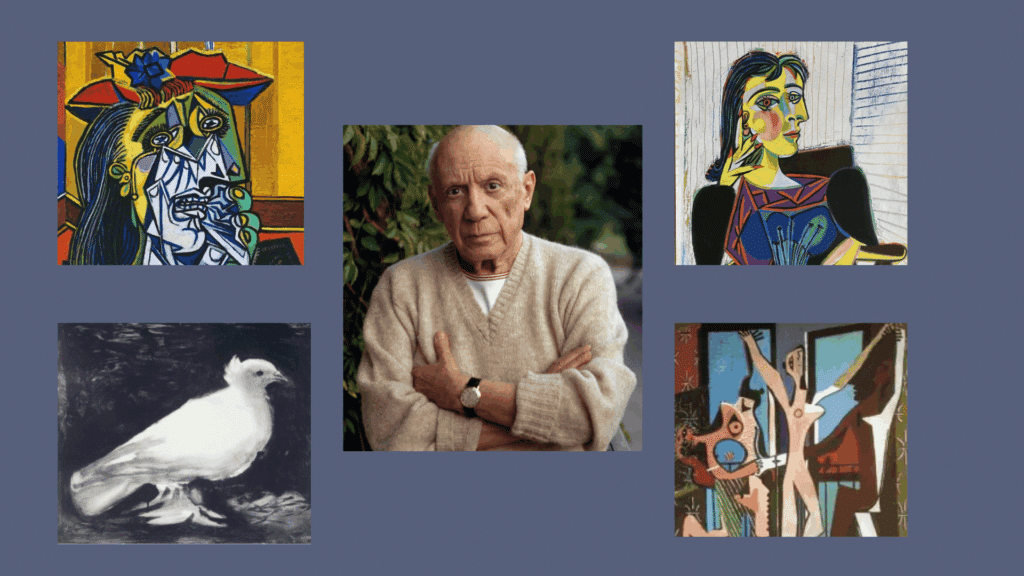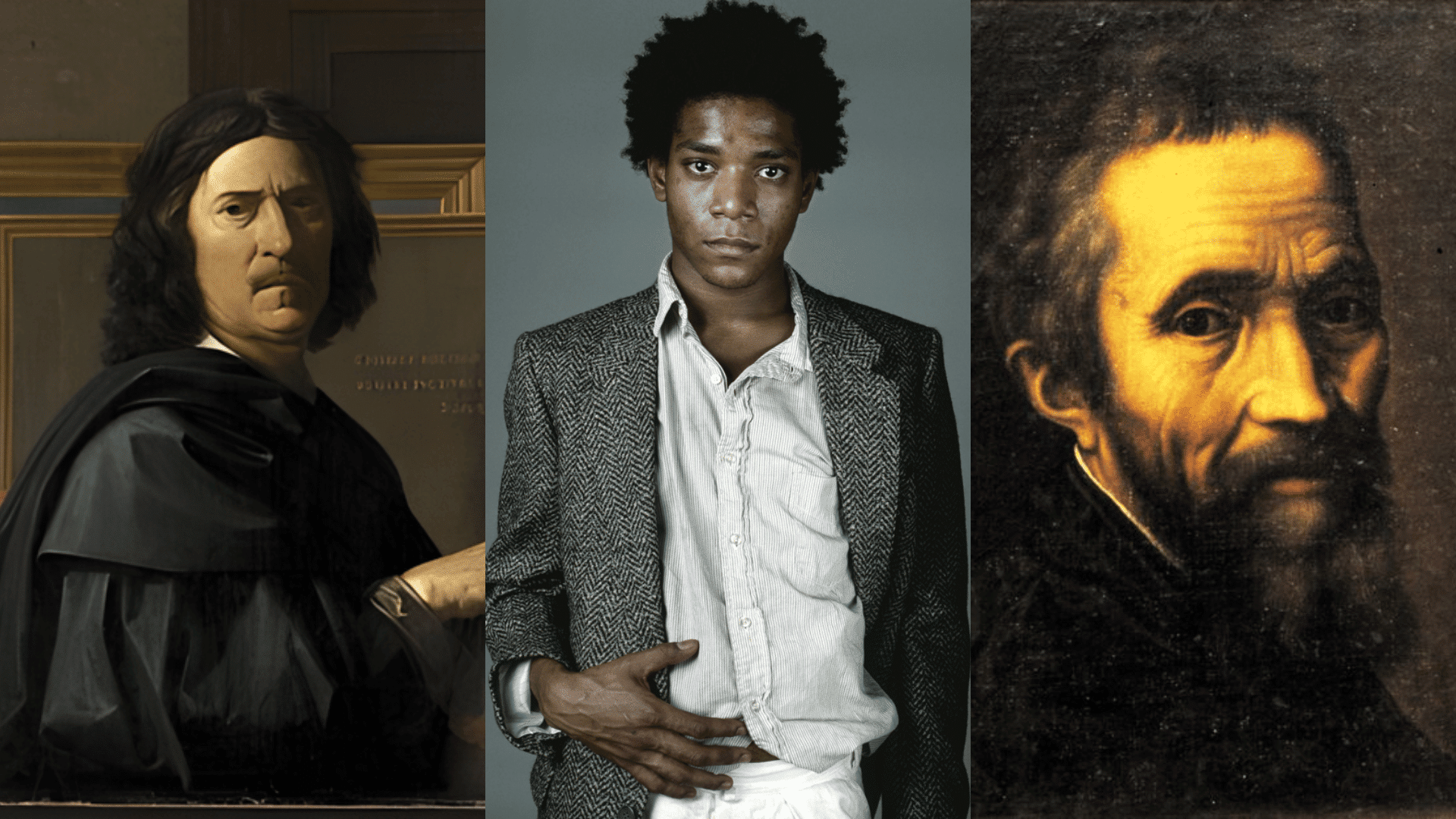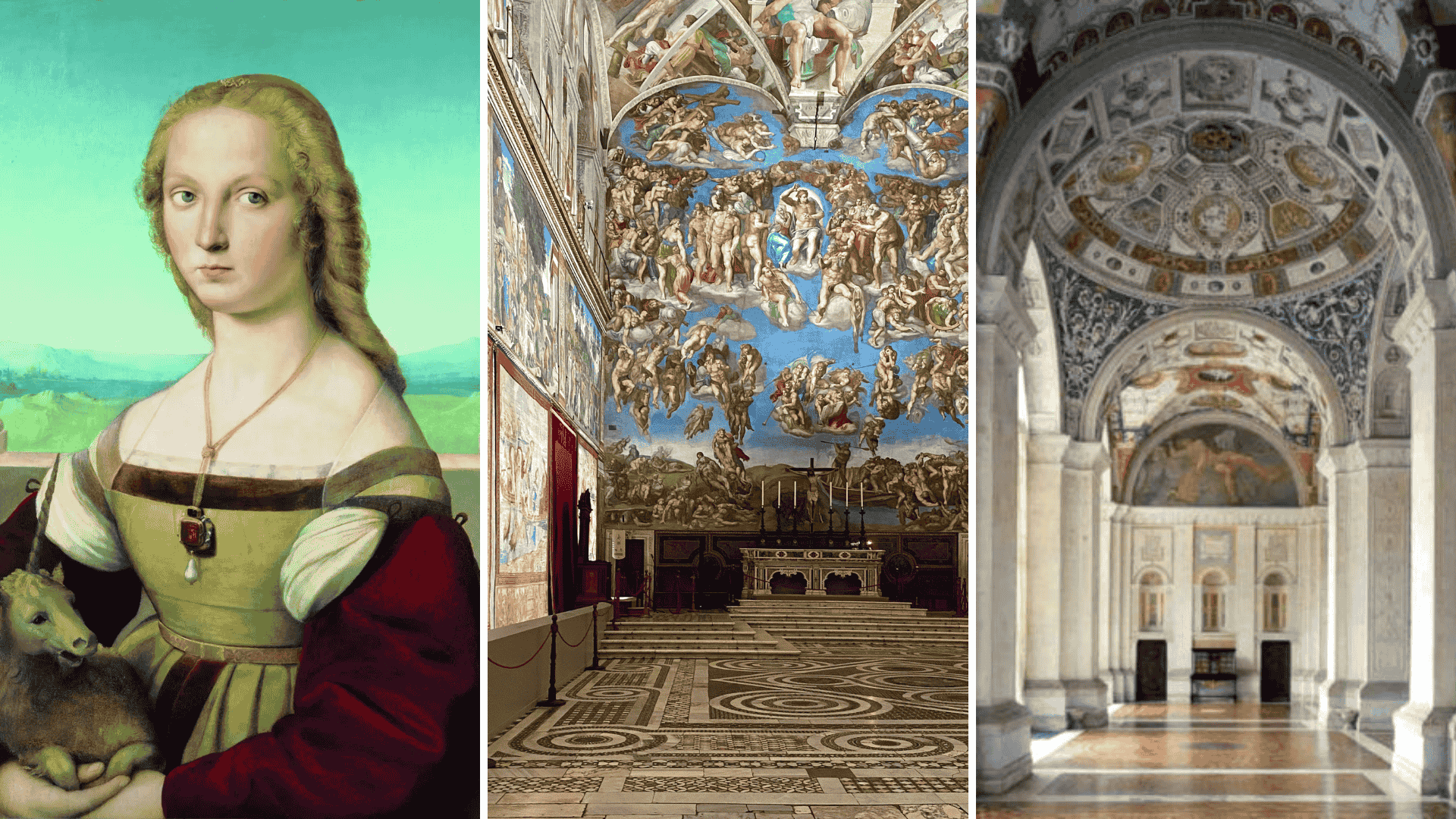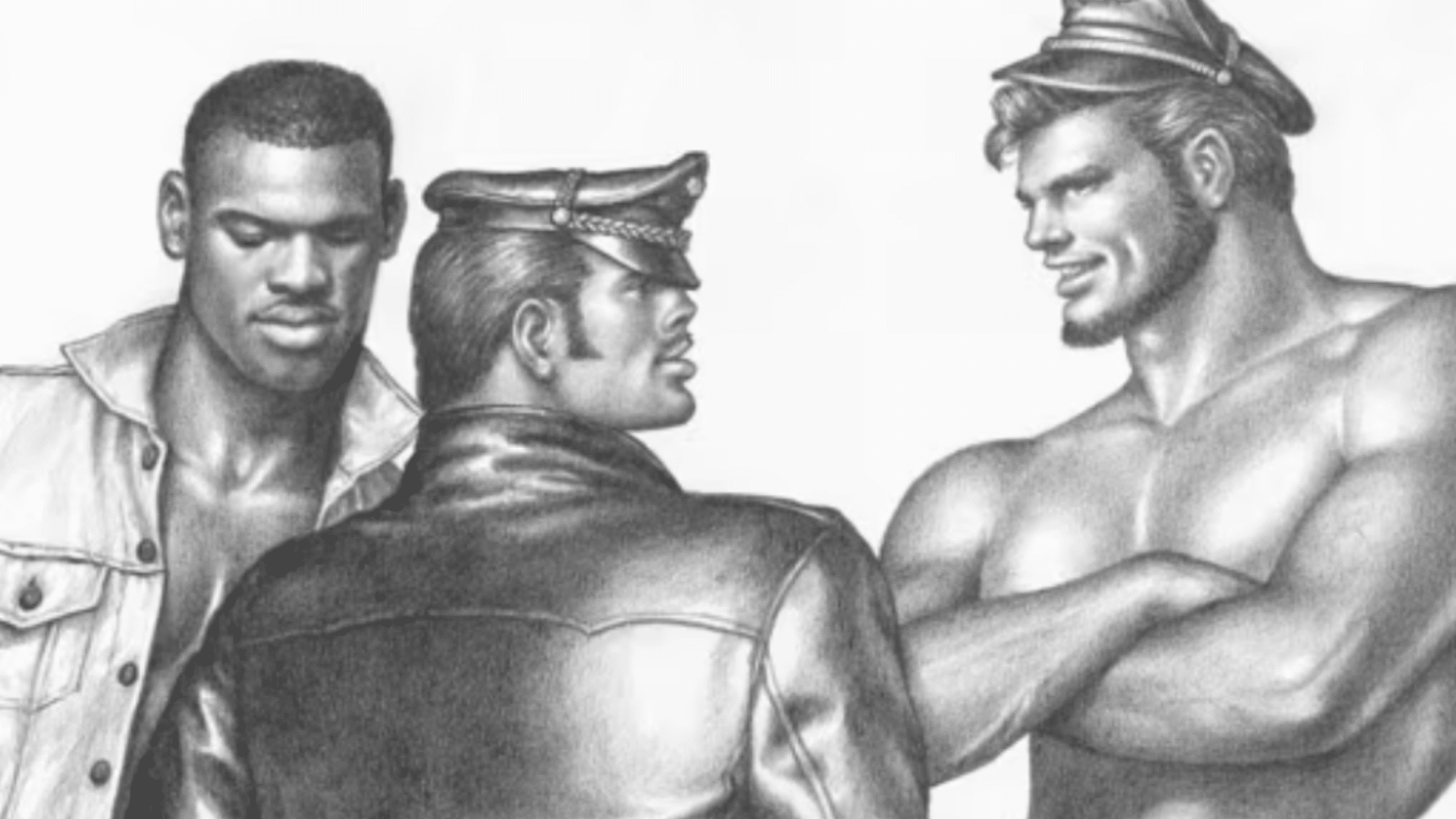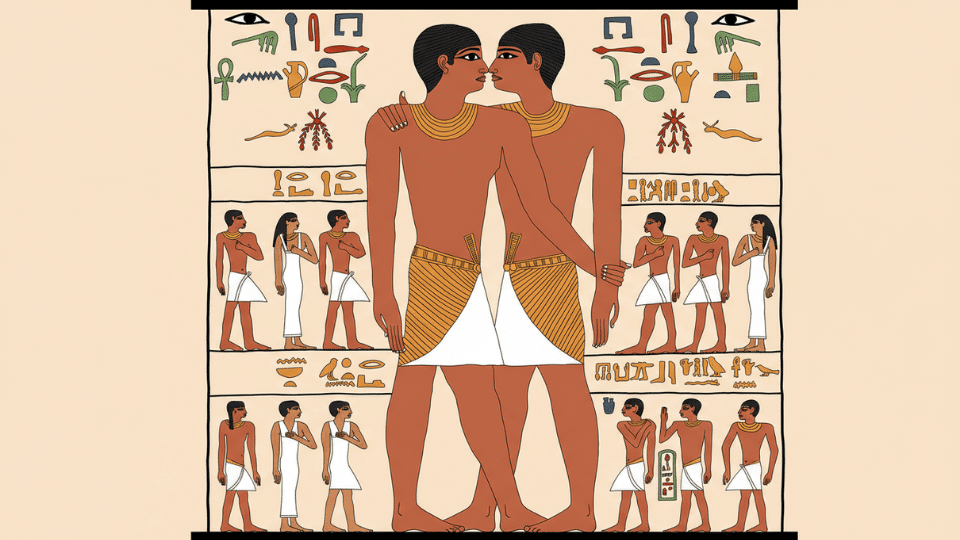Pablo Picasso created thousands of artworks during his long career, but some paintings stand out as his most recognized works. These famous paintings show his incredible talent and creative genius that changed modern art forever.
From his Blue Period to Cubist works, each painting captures a different stage of his artistic journey.
Below you’ll find the top famous Picasso paintings that art lovers and museums treasure most. You’ll learn what makes each painting special, when he created it, and why it became so important in art history.
Disclamer: This blog features nude artwork for educational and artistic purposes only, intended for mature audiences.
Why is Picasso The Master of Many Styles?
Pablo Picasso earned the title “The Master of Many Styles” through his remarkable ability to continuously reinvent his artistic approach.
His artistic path began with the Blue Period’s melancholic tones, into the Rose Period’s warmer hues, and revolutionized art entirely when he co-founded Cubism.
These Picasso’s most famous paintings, spanning diverse periods, showcase his unparalleled versatility. From realistic portraits to abstract compositions, he mastered them all.
This ability to change and adapt while maintaining artistic excellence explains why these paintings represent such great visual.
Top 10 Picasso Famous Paintings
Pablo Picasso’s artistic path spans over seven decades, capturing every shade of human emotion and innovation.
Here are the top 10 Picasso famous paintings, which are his most celebrated masterpieces that show his genius, versatility, and lasting influence on modern art.
1. Les Demoiselles d’Avignon

This painting marked a radical break with conventional European art, inspired by African tribal masks and Iberian sculpture.
The work defied Western beauty standards and perspective, establishing itself as a modernist landmark.
- Date of Completion: 1907
- Art Movement / Style: Proto-Cubism / Early Cubism
- Museum: Museum of Modern Art (MoMA), New York
2. Blue Nude
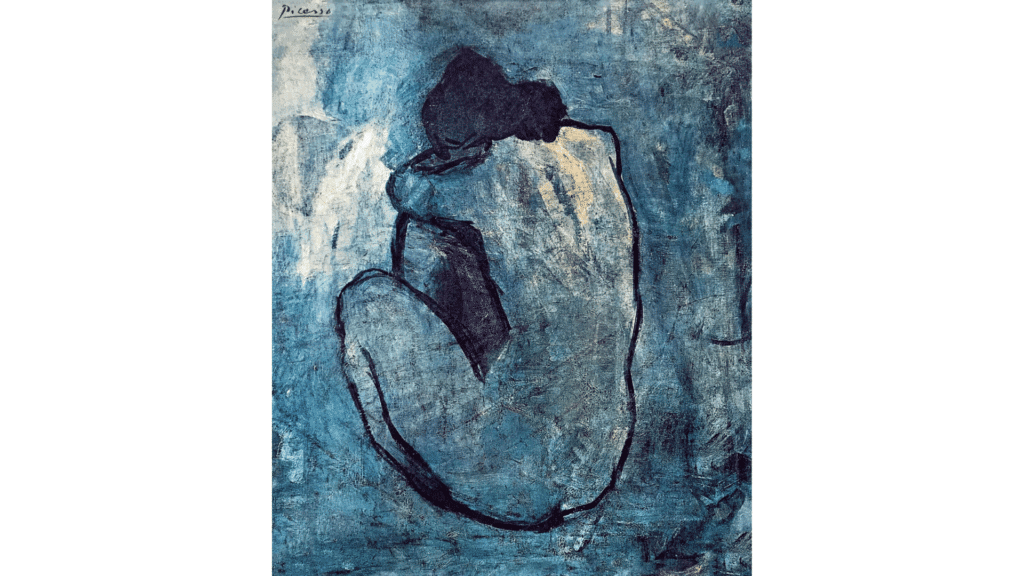
Blue Nude is a key work of Picasso’s Blue Period, depicting a seated woman with twisted body in cold blue hues that evoke emotion and despair.
Through minimal detail and expressive posture, Picasso conveys a universal sense of human suffering and isolation.
- Date of Completion: 1902
- Art Movement / Style: Blue Period / Expressionism
- Museum: The Baltimore Museum of Art, Maryland, United States
3. Dove
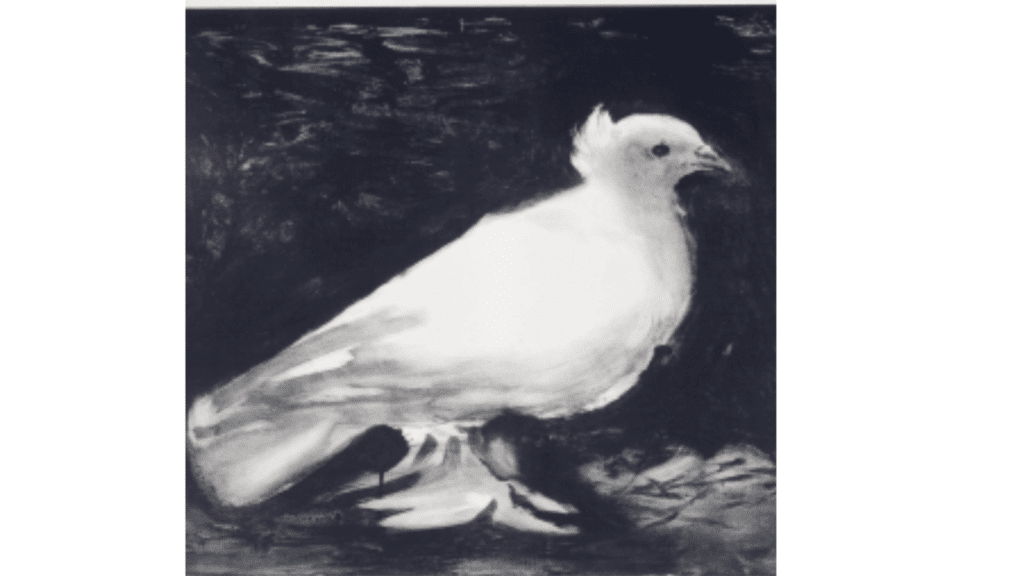
Simple yet symbolic, Dove captures Picasso’s message of peace and purity. Created in 1949 for the World Peace Congress in Paris, the artwork features a rendered white dove.
Its lines and minimalist form reflect Picasso’s mastery in conveying deep emotion through simplicity.
- Date of Completion: 1949
- Art Movement / Style: Modernism / Symbolism
- Museum: Musée Picasso, Paris, France
4. Garçon à la Pipe (Boy with a Pipe)
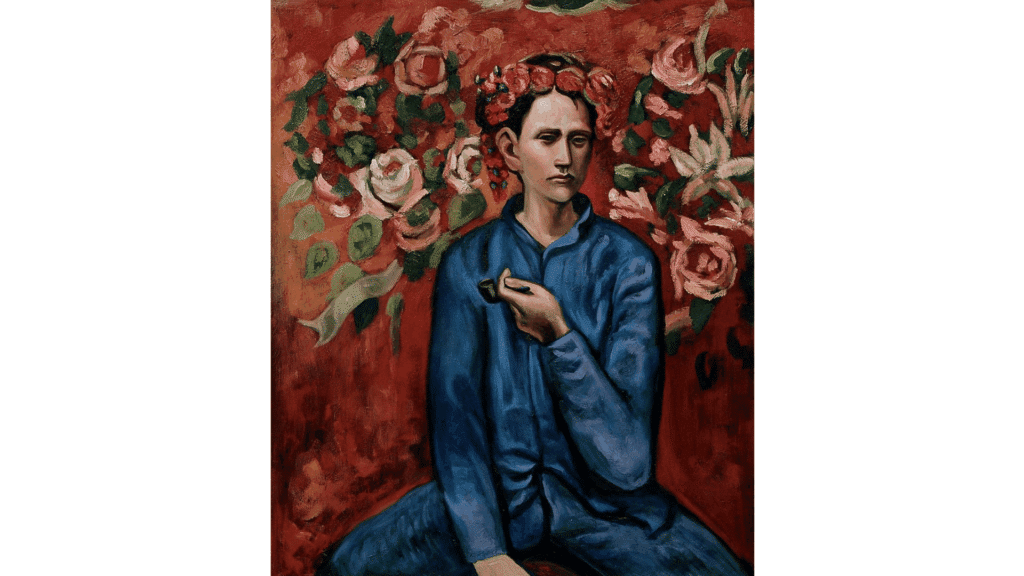
This charming portrait mixes youthful innocence with a grown-up flower crown, showing that the beauty of being young doesn’t last forever.
Created during Picasso’s Rose Period, it contrasts with his earlier somber Blue works, reflecting a lighter, more optimistic tone.
- Date of Completion: 1905
- Art Movement / Style: Rose Period
- Museum: Private Collection (formerly owned by Greentree Foundation)
5. Les Trois Danseuses (The Three Dancers)
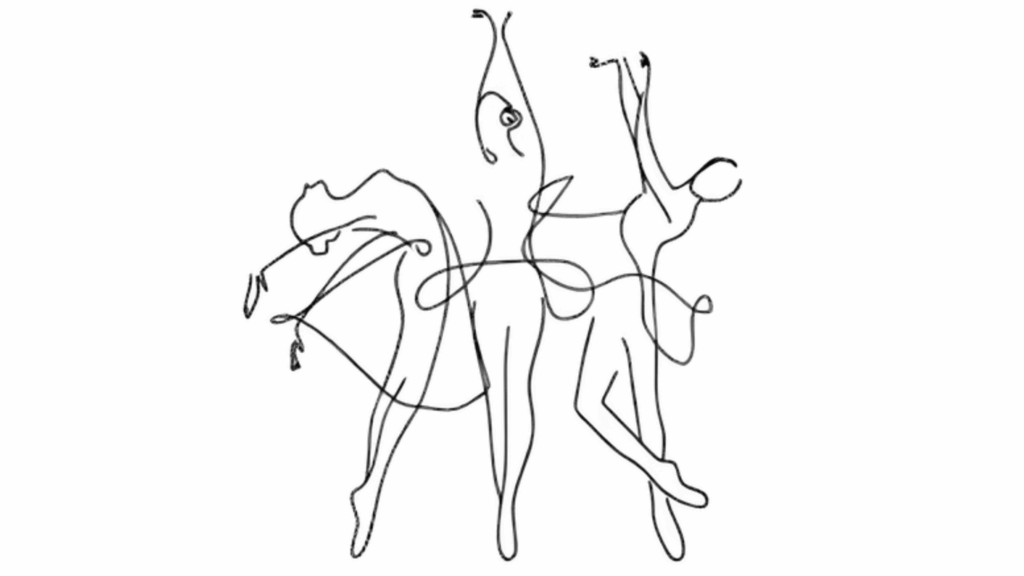
Blending Cubism and Surrealism, this dramatic composition summons complex inner emotions through distorted and intertwined figures.
The painting’s swirling forms and vibrant colors suggest tension, passion, and the unconscious mind. It’s the most expressive and psychologically intense work, becoming one of the Picasso’s most famous paintings.
- Date of Completion: 1925
- Art Movement / Style: Surrealism / Cubism Fusion
- Museum: Tate Modern, London, United Kingdom
6. Le Rêve (The Dream)
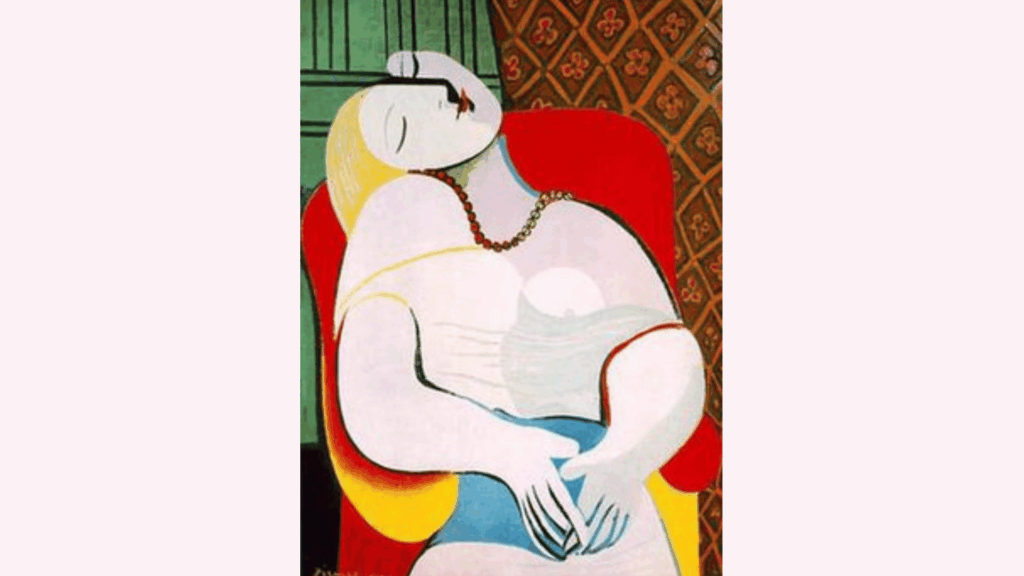
This portrait of Picasso’s muse features simplified, rounded forms and rich colors, conveying sensuality and intimacy. Its abstract style gracefully blurs the line between representation and imagination.
- Date of Completion: 1932
- Art Movement / Style: Surrealism / Modernism
- Museum: Private Collection (Steve Wynn Collection, Las Vegas)
7. Dora Maar au Chat
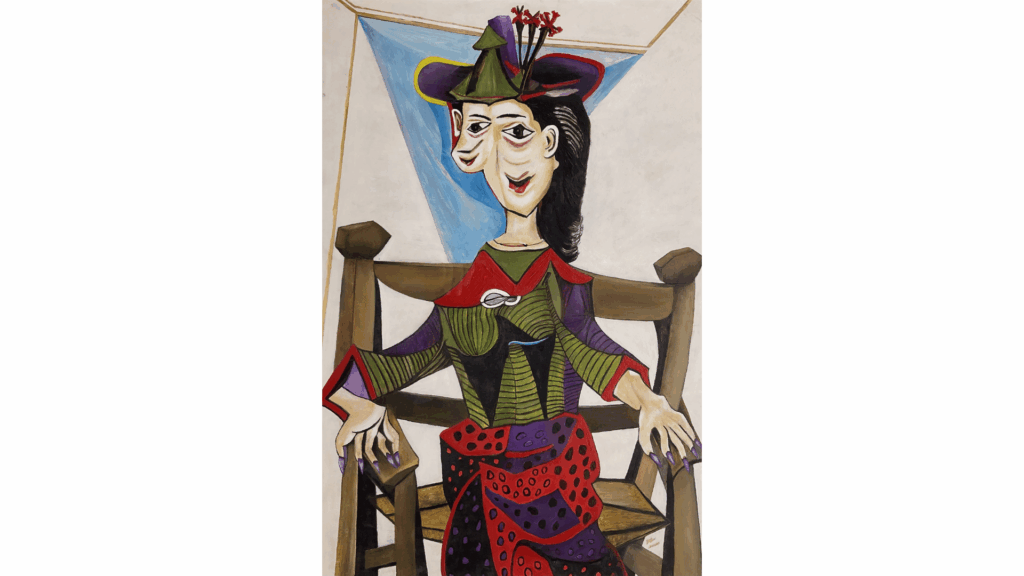
Combining portraiture with Cubist abstraction, this painting reveals psychological depth through fragmented facial features and striking contrasts.
The perched cat adds mystery and symbolism, reflecting the complexities of Picasso’s relationship with Dora Maar. Its bold composition is both provocative and introspective.
- Date of Completion: 1941
- Art Movement / Style: Surrealism / Portraiture
- Museum: Private Collection (sold at Sotheby’s in 2006)
8. The Weeping Woman
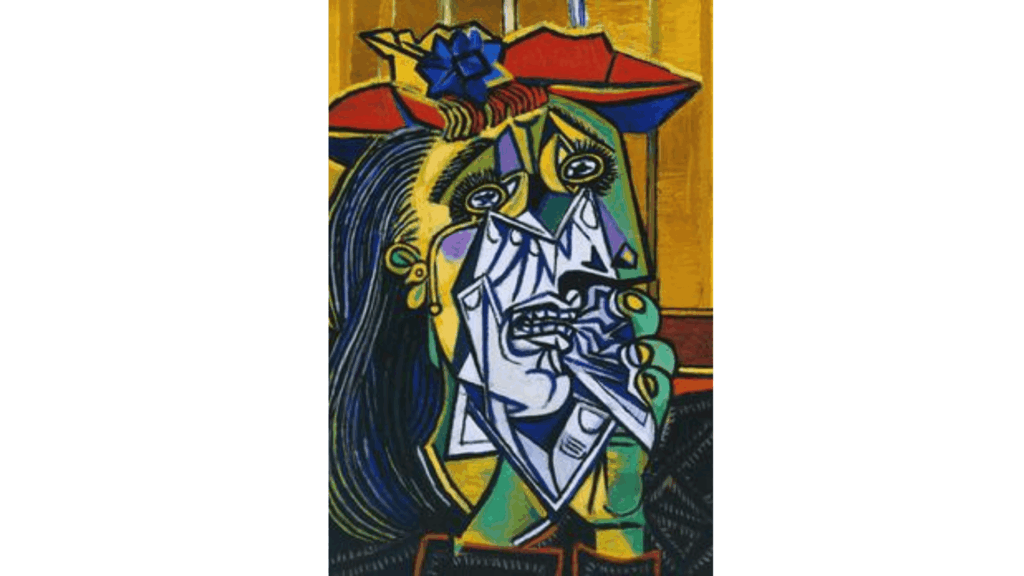
Representing the anguish and trauma of war, this painting is a powerful continuation of themes from Guernica. Picasso’s use of sharp angles and bright, jarring colors intensifies the subject’s sorrow and pain.
The image continues to serve as a powerful reflection on human suffering and resilience.
- Date of Completion: 1937
- Art Movement / Style: Cubism / Surrealism
- Museum: Tate Gallery, London, United Kingdom
9. Portrait of Dora Maar

This refined portrait emphasizes psychological complexity and expression through light brushwork.
Picasso captures both the beauty and torment of his muse, blending traditional portraiture with modern emotional depth. The work highlights the personal and artistic bond between artist and sitter.
- Date of Completion: 1937
- Art Movement / Style: Surrealism / Expressionism
- Museum: Musée Picasso, Paris, France
10. Science and Charity
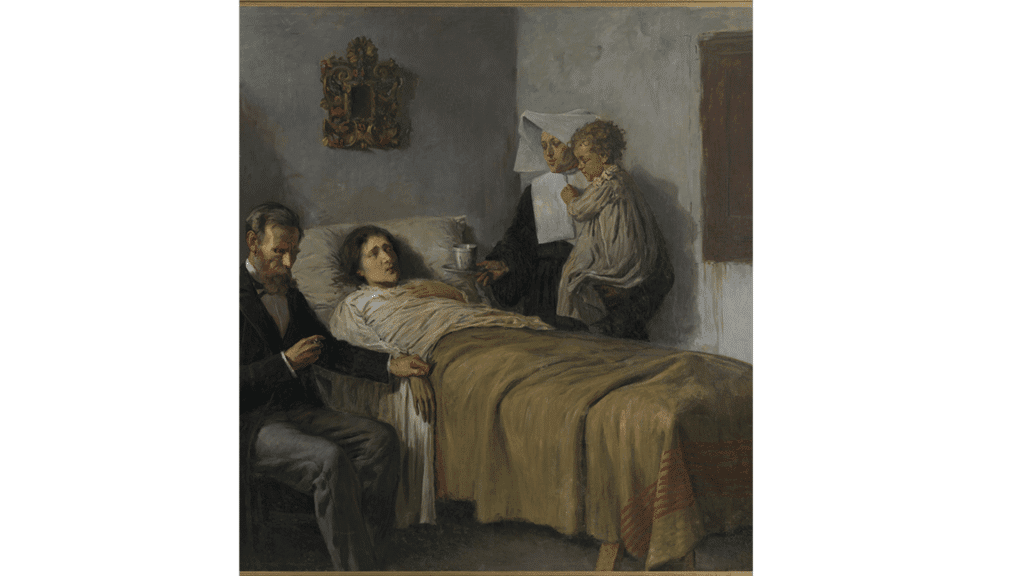
This compassionate composition highlights Picasso’s early mastery of traditional technique.
Science and Charity depicts a doctor checking a patient’s pulse while a nun cares for her, symbolizing the union of medical science and spiritual compassion.
The painting stands as a testament to his prodigious talent and sensitivity.
- Date of Completion: 1897
- Art Movement / Style: Realism
- Museum: Museu Picasso, Barcelona, Spain
Symbolism in Picasso’s Masterpieces
Here is a breakdown of the standout symbolic themes and motifs in Picasso’s most famous paintings, showing how his use of visual metaphor set him apart from traditional artists.
These are the recurring elements that art historians and critics consistently highlight as central to understanding his work.
| Painting | Symbolism |
|---|---|
| Les Demoiselles d’Avignon | Rebellion against beauty norms; birth of Cubism. |
| Blue Nude | Loneliness and emotional despair. |
| Dove | Peace, purity, and hope after war. |
| Garçon à la Pipe | Fragile youth and fleeting beauty. |
| Les Trois Danseuses | Passion, tension, and change |
| Le Rêve | Desire and dreamlike intimacy. |
| Dora Maar au Chat | Complex love and hidden emotion. |
| The Weeping Woman | Grief and resilience amid war. |
| Portrait of Dora Maar | Fractured identity and inner turmoil. |
| Science and Charity | Compassion and balance of faith and reason. |
Where to See Picasso’s Art Around the World
Seeing Picasso’s famous paintings in person deepens appreciation of his journey from Blue Period to Cubism and Surrealism. Here are top museums showcasing his masterpieces, including the 10 most famous paintings.
- Museo Picasso, Barcelona (Spain): Focused on Picasso’s early years, this museum houses over 4,000 works, including Science and Charity and The First Communion.
- Musée Picasso, Paris (France): One of the largest Picasso collections worldwide, featuring paintings, sculptures, and sketches that span his entire career, including Portrait of Dora Maar.
- Museum of Modern Art (MoMA), New York (USA): Shows revolutionary works like some of the top 10 Picasso famous paintings. Les Demoiselles d’Avignon and Girl Before a Mirror are here.
- Tate Modern, London (United Kingdom): Displays The Three Dancers and The Weeping Woman, looking at Picasso’s bold experiments in form, color, and emotion.
- Musée Picasso, Paris (France): One of the largest Picasso collections worldwide, featuring paintings, sculptures, and sketches that span his entire career, including Portrait of Dora Maar.
Final Brushstroke
Picasso’s paintings do more than fill a gallery but they tell the story of modern art itself.
From the sombre blues of his early works to the fragmented, multiple perspectives of his Cubist phase, these Picasso most famous paintings are a testament to his relentless artistic path.
This collection serves as a powerful reminder of how Pablo Picasso changed how we perceive and create art, leaving a mark on history.
Each masterpiece, with its own emotion, depth, and daring experimentation, stands as a testament to the boundless creativity and richness of Picasso’s genius.

